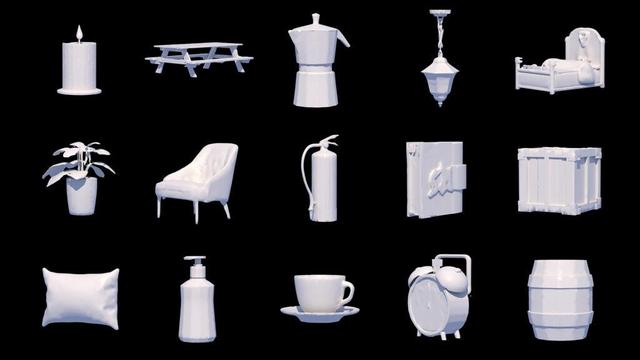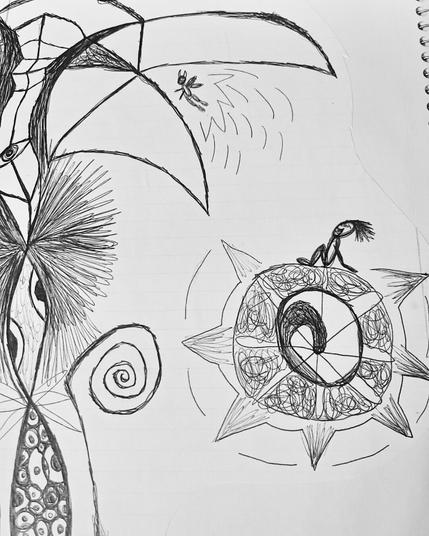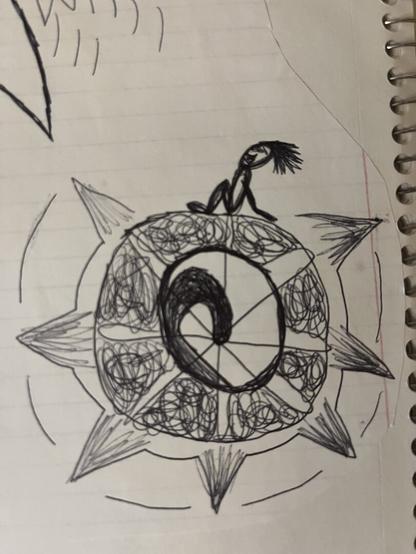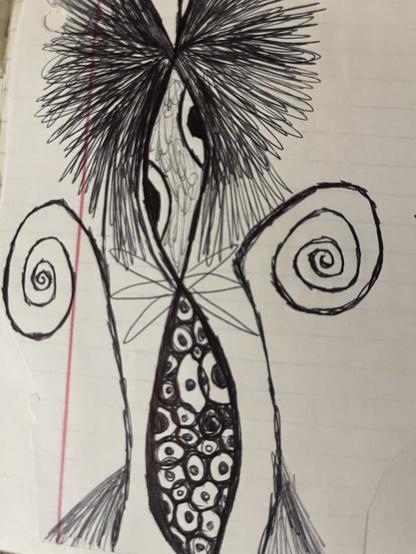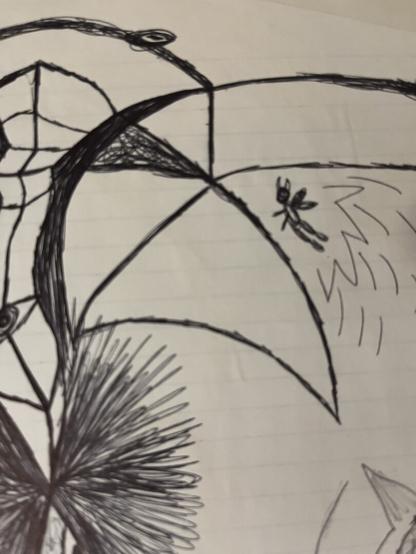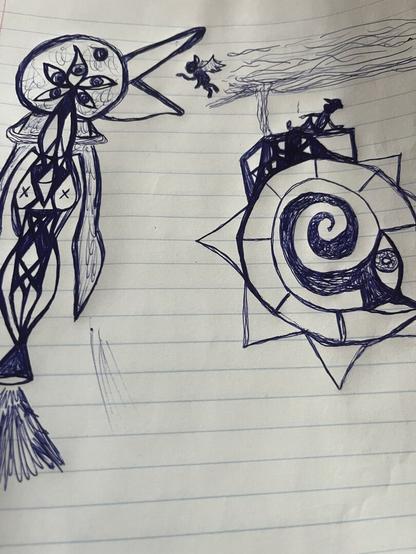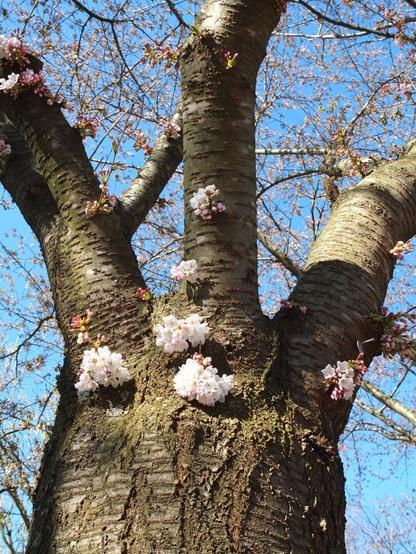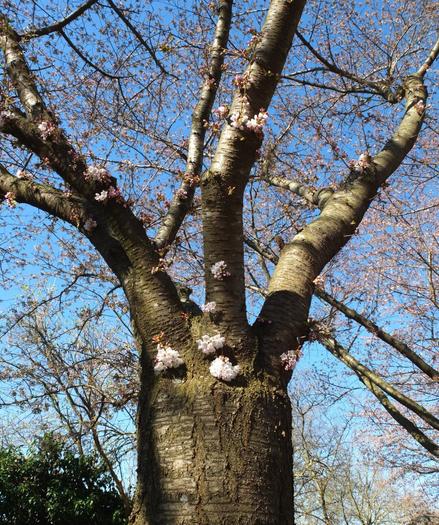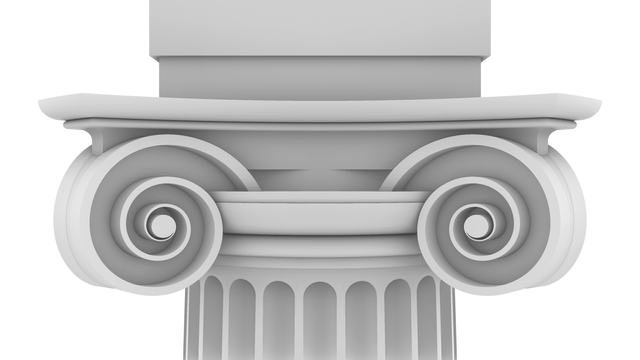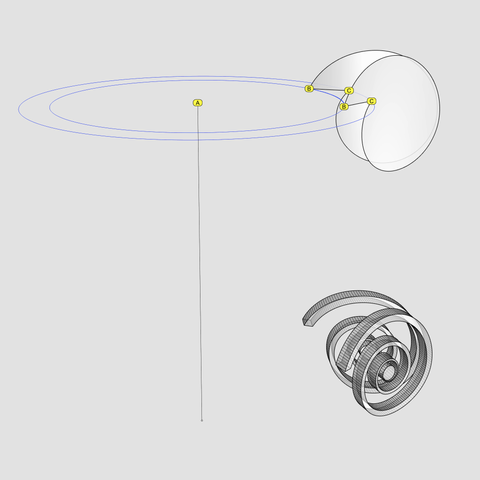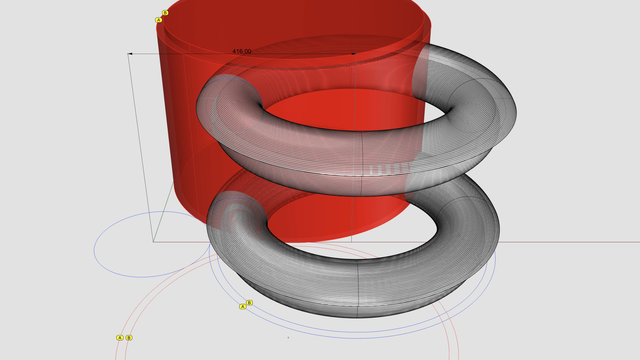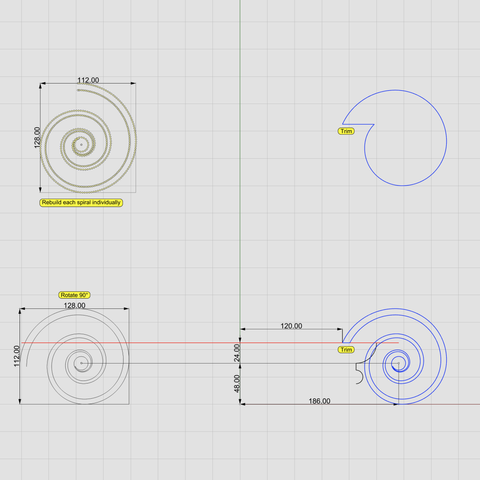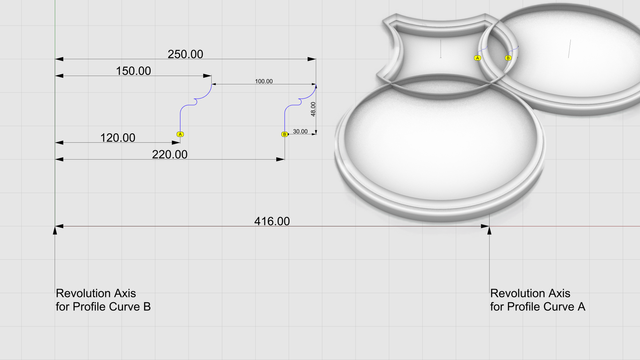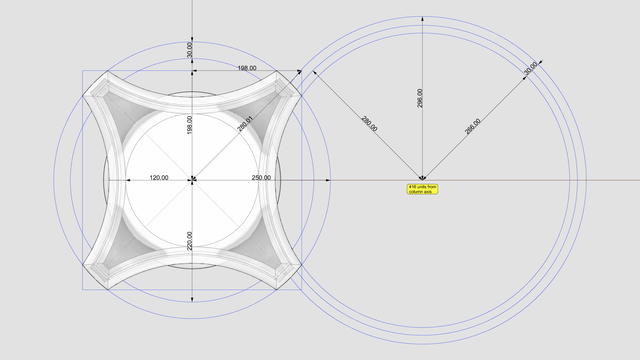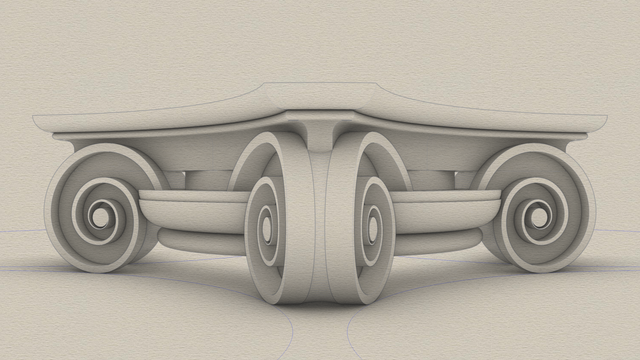Roblox Inova com IA Generativa 3D na GDC 2025: Conheça o Roblox Cube! #apidegeraçãodemalha #códigoaberto #cube3d #gdc2025 #iagenerativa3d #roblox #robloxcube https://alternativanerd.com.br/ciencia-e-tecnologia/roblox-inova-com-ia-generativa-3d-na-gdc-2025-conheca-o-roblox-cube
Splines
Intersection of #Art, #Architecture, #Mathematics, #Engineering, and #Design.
Every design must start somewhere. Many start with just a straight line. Add some arcs, and you never know where you'll end.
Trying to catch a falling knife? That looks sharp!
I love the dart, or the tip of the spear with #volutes on both ends! The dart would go well with the #EggsAndDarts motif ;-)
Stunning piece!
Splines boosted:
It is so touching how these old trees start showing their beauty on the first warm days after a long winter...a moment when i understand the need to embrace them...
#trees #bloom #spring #streetphotography #cherryblossom
#trees #bloom #spring #streetphotography #cherryblossom
Continued from https://pixelfed.social/p/Splines/808187718454868394
Explode the wedge on the top with curved faces and discard everything except the two faces.
Centered on the column axis marked with A, draw two concentric circles parallel to the XY plane — one with radius AB and another with radius AC. Split both circles with the two wedge faces.
Using the edges of the two wedge faces as #rails and using the two arcs BB and CC as #sweepingCurves, perform a #sweepTwoRails operation to generate a concave surface. Join this concave surface with the two faces.
The shape we just produced still has an open hole between the two arcs BB and CC. Cap this #planarHole to create an #airtight wedge shape with curved faces. As always, check for #nakedEdges and #nonManifoldEdges.
Align the wedge shape and the two 16 units thick spirals from the previous post. Then rotate both 45° about the column axis. Rotate and copy them again at 90° about the column axis until you have the curved volutes on all four corners.
Explode the wedge on the top with curved faces and discard everything except the two faces.
Centered on the column axis marked with A, draw two concentric circles parallel to the XY plane — one with radius AB and another with radius AC. Split both circles with the two wedge faces.
Using the edges of the two wedge faces as #rails and using the two arcs BB and CC as #sweepingCurves, perform a #sweepTwoRails operation to generate a concave surface. Join this concave surface with the two faces.
The shape we just produced still has an open hole between the two arcs BB and CC. Cap this #planarHole to create an #airtight wedge shape with curved faces. As always, check for #nakedEdges and #nonManifoldEdges.
Align the wedge shape and the two 16 units thick spirals from the previous post. Then rotate both 45° about the column axis. Rotate and copy them again at 90° about the column axis until you have the curved volutes on all four corners.
Revolutionary #Volutes
The two large blue circles at the bottom marked with A and B are from the floor plan for #ModernIonicCapital shown in https://pixelfed.social/p/Splines/807782440025967685. The larger one has a radius of 296 units, while the smaller one is 16 less, at 280. Both are centered at x = 416. Both are then rotated ±45° about the column axis to give us the four red circles. The small blue circle with radius 120 units is for the column neck.
The two red circles in the back are shown extruded vertically as cylinders. The other two haven't yet been extruded because we want to see the rest of the structure from the front.
The two tube or #torus-like structures are obtained by revolving the trimmed #spiral #volute outlines from https://pixelfed.social/p/Splines/808043616946914228 about the vertical axis located at x = 416. Only the bottom tube maintains the interior shape of the spiral.
With this setup, vertically extrude the two remaining red curves in the front so they are at least as high as the top of the upper tube.
Next, perform a #booleanDifference between the top tube and the two extrusions marked A. Keep the wedge shape of the top tube on the left side and discard the remaining portion of the tube from the right.
Then, perform a boolean difference between the bottom tube and the two extrusions marked B. With the wedge shape of the bottom tube on the left side, perform a further #booleanIntersection with the two extrusions marked A. This will produce two curved spirals that are 16 units thick. Discard the remaining portions of the bottom tube as well as all the red extrusions.
After these operations, we are left with one wedge shape with curved faces and two spirals that are 16 units thick, also with curved faces.
The next step is to convert the outer surface of the wedge shape from convex to concave.
The two large blue circles at the bottom marked with A and B are from the floor plan for #ModernIonicCapital shown in https://pixelfed.social/p/Splines/807782440025967685. The larger one has a radius of 296 units, while the smaller one is 16 less, at 280. Both are centered at x = 416. Both are then rotated ±45° about the column axis to give us the four red circles. The small blue circle with radius 120 units is for the column neck.
The two red circles in the back are shown extruded vertically as cylinders. The other two haven't yet been extruded because we want to see the rest of the structure from the front.
The two tube or #torus-like structures are obtained by revolving the trimmed #spiral #volute outlines from https://pixelfed.social/p/Splines/808043616946914228 about the vertical axis located at x = 416. Only the bottom tube maintains the interior shape of the spiral.
With this setup, vertically extrude the two remaining red curves in the front so they are at least as high as the top of the upper tube.
Next, perform a #booleanDifference between the top tube and the two extrusions marked A. Keep the wedge shape of the top tube on the left side and discard the remaining portion of the tube from the right.
Then, perform a boolean difference between the bottom tube and the two extrusions marked B. With the wedge shape of the bottom tube on the left side, perform a further #booleanIntersection with the two extrusions marked A. This will produce two curved spirals that are 16 units thick. Discard the remaining portions of the bottom tube as well as all the red extrusions.
After these operations, we are left with one wedge shape with curved faces and two spirals that are 16 units thick, also with curved faces.
The next step is to convert the outer surface of the wedge shape from convex to concave.
#ModernIonicCapital #Volute Construction
As mentioned in https://pixelfed.social/p/Splines/807933255910367093, we mentally rotate the floor plan of the modern #IonicCapital 45° so that the volute #spiral curves lie flat on the XZ plane.
The top-left diagram shows the original volute spirals from https://pixelfed.social/p/Splines/800383518517869430. If you haven't already rebuilt them from disjointed arcs to seamless #NURBS curves as described in https://pixelfed.social/p/Splines/794199123072358090, do so now. Explode the whole spiral into constituent arcs, select all arcs for the outer spiral and join them separately, and repeat this step for the inner spiral. Then, rebuild both spirals with 256 segments each.
Volute spirals for the classic and modern variants are the exact same size, but the ones in the modern version appear smaller. That's an optical illusion because the spirals are rotated 90° in the modern version as shown in the bottom left diagram.
The bottom right diagram shows the placement of the volute spirals relative to the #profileCurves of the lower portion of the modern capital. The #voluteEye is slightly above and far to the right of the #astragal profile in the modern version compared to the classic version.
At this point, we make two copies of the volute spirals and trim them to the top of the #ovolo. In one copy we only trim away the outermost arms of the spirals while maintaining the inner spirals, as shown in the bottom right figure. In the other copy, we trim away the inner spirals as shown in the top right image.
The bottom right figure in https://babel.hathitrust.org/cgi/pt?id=mdp.39015031201190&view=1up&seq=142 shows the eye 6.5 parts (52 units) from column shaft. That's not an error, but poor documentation. See floor plan in https://pixelfed.social/p/Splines/807782440025967685 where x = 198 on the square is homologous to x = 250 on the circle. To reconcile, scale 52 by 250/198 = 65.656, or 66, and offset by 120 to get 186 units.
As mentioned in https://pixelfed.social/p/Splines/807933255910367093, we mentally rotate the floor plan of the modern #IonicCapital 45° so that the volute #spiral curves lie flat on the XZ plane.
The top-left diagram shows the original volute spirals from https://pixelfed.social/p/Splines/800383518517869430. If you haven't already rebuilt them from disjointed arcs to seamless #NURBS curves as described in https://pixelfed.social/p/Splines/794199123072358090, do so now. Explode the whole spiral into constituent arcs, select all arcs for the outer spiral and join them separately, and repeat this step for the inner spiral. Then, rebuild both spirals with 256 segments each.
Volute spirals for the classic and modern variants are the exact same size, but the ones in the modern version appear smaller. That's an optical illusion because the spirals are rotated 90° in the modern version as shown in the bottom left diagram.
The bottom right diagram shows the placement of the volute spirals relative to the #profileCurves of the lower portion of the modern capital. The #voluteEye is slightly above and far to the right of the #astragal profile in the modern version compared to the classic version.
At this point, we make two copies of the volute spirals and trim them to the top of the #ovolo. In one copy we only trim away the outermost arms of the spirals while maintaining the inner spirals, as shown in the bottom right figure. In the other copy, we trim away the inner spirals as shown in the top right image.
The bottom right figure in https://babel.hathitrust.org/cgi/pt?id=mdp.39015031201190&view=1up&seq=142 shows the eye 6.5 parts (52 units) from column shaft. That's not an error, but poor documentation. See floor plan in https://pixelfed.social/p/Splines/807782440025967685 where x = 198 on the square is homologous to x = 250 on the circle. To reconcile, scale 52 by 250/198 = 65.656, or 66, and offset by 120 to get 186 units.
Left side of this diagram shows the #profileCurves for the cap of #ModernIonicCapital from the front. The right side shows a perspective view of the cap surfaces obtained by revolving the profile curves about their respective axes and after some of those have been trimmed away
The measurements for the floor plan of the modern ionic capital are given in https://pixelfed.social/p/Splines/807782440025967685 with further links to relevant pages in #Scarlata's book at the bottom.
I won't bore you with the bottom portion of the modern #capital because it is very similar to that of the classic capital shown in https://pixelfed.social/p/Splines/792124787573855518. A significant difference is that the bottom #ovolo is shorter, with a total height of 32 units instead of 40
For the cap, we need two identical copies of a single profile curve that is 30 units wide and 48 units tall. The curves marked by A and B in the diagram are oriented in the same direction and are spaced 100 units from each other.
The bottom of profile curve A lines up with the neck of the #columnShaft at 120 units from the column axis. The revolution axis for this curve is located at 416 units from the column axis at the center of the largest circle in the floor plan.
We #revolve profile curve A full circle about its revolution axis. Then, we #rotate the resulting surface about the column axis to get 4 identical copies.
We revolve profile curve B full circle about the column axis. Then, we trim the resulting surface along with the 4 others at each intersection to get the side and corner surfaces for the cap of the capital.
We #join the trimmed surfaces, cap #planarHoles to convert them into a closed solid, and verify that the resulting solid is #airtight with no #nakedEdges and no #nonManifoldEdges.
The cap is in the correct final orientation. The volutes will be at 45° angles, but when we construct them, it will be easier to rotate the whole plan 45° so that the #volute #spiral is on the XZ plane.
The measurements for the floor plan of the modern ionic capital are given in https://pixelfed.social/p/Splines/807782440025967685 with further links to relevant pages in #Scarlata's book at the bottom.
I won't bore you with the bottom portion of the modern #capital because it is very similar to that of the classic capital shown in https://pixelfed.social/p/Splines/792124787573855518. A significant difference is that the bottom #ovolo is shorter, with a total height of 32 units instead of 40
For the cap, we need two identical copies of a single profile curve that is 30 units wide and 48 units tall. The curves marked by A and B in the diagram are oriented in the same direction and are spaced 100 units from each other.
The bottom of profile curve A lines up with the neck of the #columnShaft at 120 units from the column axis. The revolution axis for this curve is located at 416 units from the column axis at the center of the largest circle in the floor plan.
We #revolve profile curve A full circle about its revolution axis. Then, we #rotate the resulting surface about the column axis to get 4 identical copies.
We revolve profile curve B full circle about the column axis. Then, we trim the resulting surface along with the 4 others at each intersection to get the side and corner surfaces for the cap of the capital.
We #join the trimmed surfaces, cap #planarHoles to convert them into a closed solid, and verify that the resulting solid is #airtight with no #nakedEdges and no #nonManifoldEdges.
The cap is in the correct final orientation. The volutes will be at 45° angles, but when we construct them, it will be easier to rotate the whole plan 45° so that the #volute #spiral is on the XZ plane.
classical, not classic
@charlesrkiss Haha Sade, yes! I watched the music video again on YouTube, and noticed lots of classic design patterns in the lounge :-)
I'm sure one of these days I will figure out how to use #Pixelfed comment feature correctly, without tearing my hair apart, and without have to go on Easter egg hunts to find comments
Plan for the #ModernIonicCapital
If the design in https://pixelfed.social/p/Splines/807569519962747338 looks daunting, let me assure you it is far simpler than the work that went into the reconstruction of just the #scroll for the #classicIonicCapital. Be sure to check out #MileStone4 at https://pixelfed.social/p/Splines/795361973789834465.
With the modern #IonicCapital, the designers went back to the basics of using just straight lines and circular arcs to define the geometry of the essential elements of the capital. No #braids, #keystones, or #modillions, and no #helix curves or #sinusoids.
We start the floorplan for the modern ionic capital with a circle of radius 5/6 of µ (120 when µ = 144) which marks the neck of the #columnShaft.
Tangent to this circle is a large circle of radius 296 units centered on the X axis exactly 416 units from the column axis. This is the circle that marks the curve of the #abacus, which is always tangential to the column shaft at the neck. This circle also marks the curved faces of the interior portion of the #volute wedge. Without the raised volute spirals, the interior wedge appears flush with the abacus as they follow the same circular arc.
Concentric to this large circle is another circle with a radius of 280 units to mark the extent of the raised volute spirals which are 16 units thick. Another concentric circle of radius 266 units marks the outer edge of the top of the capital.
The gap between the outermost large circle and the innermost concentric circle is 30 units, and that is reflected in another pair of circles centered on the column axis with radius of 250 units and 220 units to define the four corners.
The capital footprint fits in a square 396 units wide — or 24.75 parts horizontally from axis, per #Scarlata in https://babel.hathitrust.org/cgi/pt?id=mdp.39015031201190&view=1up&seq=45.
Use this with the sketch in https://babel.hathitrust.org/cgi/pt?id=mdp.39015031201190&view=1up&seq=142
If the design in https://pixelfed.social/p/Splines/807569519962747338 looks daunting, let me assure you it is far simpler than the work that went into the reconstruction of just the #scroll for the #classicIonicCapital. Be sure to check out #MileStone4 at https://pixelfed.social/p/Splines/795361973789834465.
With the modern #IonicCapital, the designers went back to the basics of using just straight lines and circular arcs to define the geometry of the essential elements of the capital. No #braids, #keystones, or #modillions, and no #helix curves or #sinusoids.
We start the floorplan for the modern ionic capital with a circle of radius 5/6 of µ (120 when µ = 144) which marks the neck of the #columnShaft.
Tangent to this circle is a large circle of radius 296 units centered on the X axis exactly 416 units from the column axis. This is the circle that marks the curve of the #abacus, which is always tangential to the column shaft at the neck. This circle also marks the curved faces of the interior portion of the #volute wedge. Without the raised volute spirals, the interior wedge appears flush with the abacus as they follow the same circular arc.
Concentric to this large circle is another circle with a radius of 280 units to mark the extent of the raised volute spirals which are 16 units thick. Another concentric circle of radius 266 units marks the outer edge of the top of the capital.
The gap between the outermost large circle and the innermost concentric circle is 30 units, and that is reflected in another pair of circles centered on the column axis with radius of 250 units and 220 units to define the four corners.
The capital footprint fits in a square 396 units wide — or 24.75 parts horizontally from axis, per #Scarlata in https://babel.hathitrust.org/cgi/pt?id=mdp.39015031201190&view=1up&seq=45.
Use this with the sketch in https://babel.hathitrust.org/cgi/pt?id=mdp.39015031201190&view=1up&seq=142
@charlesrkiss Thanks! Classical designers filled those "holes" with flowers, leaves, eggs, darts, or other adornments as in https://babel.hathitrust.org/cgi/pt?id=mdp.39015031201190&view=1up&seq=142
LOL, my middle school teacher emphasized anything divided by zero is undefined, not infinity, but it he always told us that tan 90° (infinite rise over zero run) is infinity :-D
Yeah, I got that — You also chuckled at "Smooth Operator" Coast to Coast, LA to #Chicago (in my response to both ends of appalachia are bitter :-D
Yeah, I got that — You also chuckled at "Smooth Operator" Coast to Coast, LA to #Chicago (in my response to both ends of appalachia are bitter :-D
Does X over Zero mean infinity or is there an alternate meaning as well?
#ModernIonicCapital sketch
The modern #IonicCapital with curved faces and radial symmetry is a drop-in replacement for the classic Ionic capital with flat faces.
Unlike the classic variant, which has a rectangular footprint, the modern variant has a footprint that fits in a square. In the classic variant, the volutes and scrolls project out so that they are visible from the top. In the modern variant, there are no scrolls, the volutes have a curved face, and they are completely nestled under the top.
The sketch omits the #fillet at the bottom because we added that to the column #shaft in https://pixelfed.social/p/Splines/791794072490907090.
So, we start at the bottom with an #astragal which is exactly the same size as in the classic variant.
Next up from the bottom is the #ovolo which is shorter than in the classic variant. It still has a #tectonicSurface on which #decorativeElements rest, and a #virtualSurface that envelops the decorative elements. In this case, I chose a minimalist design with no #eggsAndDarts. Instead, I use another plain ovolo as a substitute that is offset from the tectonic surface by 1 part (or 8 units, when µ = 144).
Above the ovolo is the #channel, which in this case is a round slab whose surface matches the neck of the column with a radius equal to 5/6 of µ (120 units).
Above the channel is the #abacus which has a curved face that is repeated on all four sides. There is an abacus with flat sides in the classic variant as well, but it is not visible from the front because it is hidden behind the #volute slab. In fact, the vertical #braidsAssembly in the classic variant is attached to the abacus.
Above the abacus is a #reed, and above that, another small Ovolo that tops the modern capital.
The curved volutes follow the blue circular arcs at the bottom of the sketch. The volutes are shaped like a wedge, as can be seen more clearly in the corner facing the front. The portion of the wedge between the outer rims has a concave surface.
The modern #IonicCapital with curved faces and radial symmetry is a drop-in replacement for the classic Ionic capital with flat faces.
Unlike the classic variant, which has a rectangular footprint, the modern variant has a footprint that fits in a square. In the classic variant, the volutes and scrolls project out so that they are visible from the top. In the modern variant, there are no scrolls, the volutes have a curved face, and they are completely nestled under the top.
The sketch omits the #fillet at the bottom because we added that to the column #shaft in https://pixelfed.social/p/Splines/791794072490907090.
So, we start at the bottom with an #astragal which is exactly the same size as in the classic variant.
Next up from the bottom is the #ovolo which is shorter than in the classic variant. It still has a #tectonicSurface on which #decorativeElements rest, and a #virtualSurface that envelops the decorative elements. In this case, I chose a minimalist design with no #eggsAndDarts. Instead, I use another plain ovolo as a substitute that is offset from the tectonic surface by 1 part (or 8 units, when µ = 144).
Above the ovolo is the #channel, which in this case is a round slab whose surface matches the neck of the column with a radius equal to 5/6 of µ (120 units).
Above the channel is the #abacus which has a curved face that is repeated on all four sides. There is an abacus with flat sides in the classic variant as well, but it is not visible from the front because it is hidden behind the #volute slab. In fact, the vertical #braidsAssembly in the classic variant is attached to the abacus.
Above the abacus is a #reed, and above that, another small Ovolo that tops the modern capital.
The curved volutes follow the blue circular arcs at the bottom of the sketch. The volutes are shaped like a wedge, as can be seen more clearly in the corner facing the front. The portion of the wedge between the outer rims has a concave surface.
Client Info
Server: https://mastodon.social
Version: 2025.04
Repository: https://github.com/cyevgeniy/lmst
